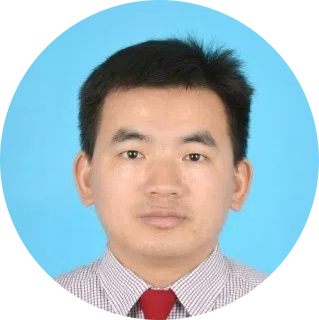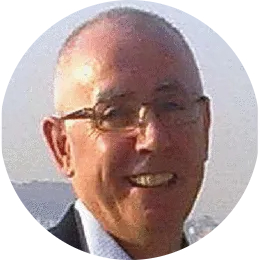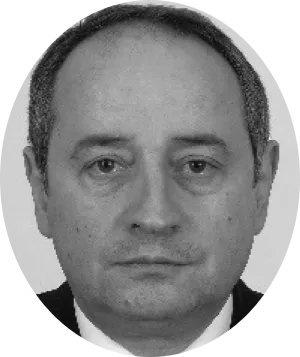Special Session 1 会议特别专题 1
New Waveforms for 6G Communications, Sensing, and Localization
Description: The advent of 6G technology
demands revolutionary waveform designs to
simultaneously address three critical imperatives:
ultra-reliable communication, high-resolution
sensing, and centimeter-level positioning. Unlike
5G’s focus on enhanced mobile broadband, 6G aims to
unify these functionalities into a single framework,
requiring waveforms with unprecedented spectral
efficiency, adaptability, and multi-dimensional
capabilities. A critical enabler of these
advancements lies in the design of novel waveforms
that go beyond traditional orthogonal
frequency-division multiplexing (OFDM) to meet the
diverse and demanding requirements of future
networks.
The design of new waveforms is a cornerstone of 6G
research, driven by the need to overcome fundamental
limitations of current technologies and unlock
transformative capabilities. Below, we highlight the
critical motivations for prioritizing waveform
innovation in 6G (1) Bridging the Gap Between 5G
Limitations and 6G Ambitions: While 5G relies
heavily on OFDM, its rigidity in handling high
mobility, ultra-reliable low-latency communication
(URLLC), and non-orthogonal resource allocation
poses significant barriers to 6G’s vision. Emerging
applications—such as extended reality (XR),
autonomous systems, and tactile internet—demand
waveforms that dynamically adapt to heterogeneous
requirements. For instance, OTFS has shown promise
in high-Doppler scenarios, while NOMA-based
waveforms address spectrum scarcity. Without
reimagining waveforms, 6G risks falling short of its
performance targets. (2) The Rise of Integrated
Sensing and Communication (ISAC): 6G aims to unify
communication and sensing into a single
infrastructure, enabling applications like
environmental monitoring, gesture-based interfaces,
and collision avoidance. Traditional waveforms,
however, are optimized solely for data transmission.
Novel ISAC-centric waveforms must balance tradeoffs
between sensing resolution, communication
throughput, and spectral efficiency. This
integration is pivotal for reducing hardware costs,
minimizing spectrum fragmentation, and enabling
context-aware networks. (3) Spectrum Expansion into
THz and mmWave Bands: The exploitation of THz
frequencies (0.1–10 THz) is central to achieving
6G’s terabit-per-second data rates. However, these
bands suffer from severe propagation losses and
hardware imperfections. Waveform designs must
compensate for these challenges through techniques
like ultra-wideband modulation, advanced
equalization, and intelligent beamforming.
Simultaneously, mmWave bands require waveforms
compatible with massive MIMO and reconfigurable
intelligent surfaces (RIS), demanding innovations in
spatial signal processing. (4) Sustainability and
Energy Efficiency Imperatives:With global attention
on reducing carbon footprints, 6G waveforms must
prioritize energy efficiency. Low-PAPR waveforms,
such as those based on constant envelope OFDM
(CE-OFDM), minimize power amplifier inefficiencies,
while SWIPT-compatible designs enable battery-free
IoT devices. Energy-optimized waveforms are critical
for sustainable scaling of 6G networks, particularly
in energy-constrained environments like rural areas
or space-terrestrial networks. (5) AI/ML: A
Game-Changer for Adaptive Waveforms: The integration
of AI/ML into waveform design marks a paradigm
shift. Machine learning enables real-time
optimization of waveform parameters in response to
dynamic channel conditions, user density, and
application requirements. For example, reinforcement
learning can autonomously adjust modulation schemes
or pilot spacing to maximize throughput in congested
networks. Such adaptability is essential for 6G’s
vision of self-optimizing, context-aware networks.
(6) Global Research Momentum and Industry Alignment
: Leading institutions (e.g., MIT, Fraunhofer HHI),
industry consortia (e.g., Next G Alliance, Hexa-X),
and standardization bodies are actively prioritizing
waveform research. Recent breakthroughs—such as OTFS
field trials and AI-driven waveform
prototypes—underscore the feasibility of radical
innovations. This workshop aligns with global
efforts to establish a unified roadmap for 6G
waveforms, fostering collaboration between academia,
industry, and regulators.
This special session provides a timely platform to
address the multifaceted challenges of 6G waveform
design. By uniting researchers across
disciplines—signal processing, AI, hardware
engineering, and standardization—we aim to
accelerate the development of waveforms that
redefine the boundaries of wireless technology.
Contributions to this workshop will directly shape
the 6G ecosystem, ensuring it meets the demands of a
hyper-connected, intelligent, and sustainable
future. We invite contributions on theoretical
innovations such as channel estimation, sensing and
localization algorithms, novel detection schemes,
and scalable multi-antenna or multi-user
architectures, as well as practical implementations
including hardware prototyping, standardization
pathways, and industry trials. By fostering dialogue
between academia and industry, this forum targets
accelerating the development of next-generation
waveforms tailored to 6G’s transformative vision.
Session organizers
Prof. Ping Yang (Senior Member, IEEE), University of Electronic Science
and Technology of China, China
Prof. Saviour Zammit (Senior Member, IEEE), University of Malta, Malta
Prof. Vladimir Poulkov (Senior Member, IEEE), the Technical University of
Sofia, Bulgaria
Prof. Gang Wu (Senior Member, IEEE), University of Electronic Science and
Technology of China, China
Prof. Tony Q. S. Quek (Fellow, IEEE), Singapore University of
Technology and Design, Singapore
The topics of interest include, but are not limited to:
▪ Advanced waveform candidates for 6G (OFDM
alternatives, OTFS, NOMA, etc.)
▪ AI/ML-driven adaptive waveform design and
optimization
▪ Signal processing for waveforms-based transceiver
designs
▪ Ultra-low latency and high-reliability waveforms
for 6G
▪ Terahertz (THz) and millimeter-wave (mmWave)
waveform design
▪ Energy-efficient and green waveform technologies
for 6G
▪ Integrated sensing and communication (ISAC)
waveforms
▪ Channel estimation and signal detections for
waveforms
▪ Information theoretical aspect of waveform design
▪ Development of integrated sensing/localization and
communications
▪ MIMO and (cell-free) massive MIMO-aided systems
▪ Resilient waveforms for high-mobility and extreme
environments
▪ Waveform coexistence and interference management
in 6G networks
Submission method
Submit your Full Paper (no less than 4 pages with two colums) or
your paper abstract-without publication (200-400
words) via
Online Submission System, then choose Special
Session 1 (New Waveforms for 6G Communications,
Sensing, and Localization)
Template Download
Introduction of
Session organizers
 Prof. Ping Yang (Senior Member, IEEE),
University of Electronic Science and Technology of China, China
Prof. Ping Yang (Senior Member, IEEE),
University of Electronic Science and Technology of China, China
Ping Yang (Senior Member, IEEE) received the Ph.D.
degree from the University of Electronic Science and
Technology of China, Chengdu, China, in 2013. He is
currently a Full Professor with the University of
Electronic Science and Technology of China. He was
selected as Elsevier 2020-2024 “China Highly Cited
Scholar” and was a “Top 2% Scientist” in the world.
From 2012 to 2013, he was a Visiting Scholar with
the School of Electronics and Computer Science,
University of Southampton, Southampton, U.K. From
2014 to 2016, he was a Research Fellow with the
School of Electrical and Electronic Engineering,
Nanyang Technological University, Singapore. He has
authored or coauthored and presented more than 150
papers in journals (90+) and conference proceedings,
including 7 ESI highly cited/hot papers. He has
authored a book as well as two white papers. Also,
he holds 12 CN and 2 US patents and co-authored
another 30+ patent applications on 5G technologies
and machine learning. His research interests include
5G and beyond wireless systems, machine learning,
and bionic communication systems. He has been
Co-Chair /TPC member of several IEEE top-tier
conferences. He received Exemplary Reviewer of IEEE
Communications Letters and IEEE Transactions on
Communications in 2015 and 2020, respectively. He
served as an editorial board member for three SCI
journals, including IEEE COMMUNICATIONS LETTERS and
as the Lead Guest Editor of IEEE JOURNAL OF SELECTED
TOPICS IN SIGNAL PROCESSING.
 Prof. Saviour Zammit (Senior Member, IEEE),
University of Malta, Malta
Prof. Saviour Zammit (Senior Member, IEEE),
University of Malta, Malta
Prof. Saviour Zammit (Senior Member, IEEE) is a
full-time professor in Telecommunications with the
department of Communications and Computer
Engineering with the Faculty of ICT at the
University of Malta (UM). He graduated Bachelor of
Electrical Engineering with first class honors from
the University of Malta in 1986, Master of Science
in Telecommunications Engineering with Distinction
from the University of Aston in 1990 as a
commonwealth scholar (Dissertation: Parallel
Computer Architectures for Real Time Image
Processing), and Doctor of Philosophy from the same
University in 1996 (Dissertation: Digital Video
Transmission over Wireless Access Networks). Between
1997 and 2008, Prof. Saviour Zammit was deputy
chairman, board director and technical director for
a number of public and private companies, including
Maltacom plc (later GO plc), Vodafone Malta Ltd.,
and Mobisle Limited (later GO Mobile). He has
founded more than 15 technology companies in his
career in areas such as broadband internet, mobile
communications, satellite communications, and
software development.He was founding Director of the
Centre for Entrepreneurship and Business Incubation
and is currently with the Faculty of ICT. Between
2016 and 2021 Prof. Zammit was Pro-Rector for
Research and Knowledge Transfer at the University of
Malta. He chaired the IT Services Committee and the
Digital Education Committee at the UM and
represented Malta in the COST ICT domain, the e-IRG
and the e-IPF in Europe. He has led and participated
in a number of nationally and EU funded research
projects. His current research interests include
Resilient Multimedia Communications, AI/ML for 5G/6G
telecommunications systems, Green Telecoms, Internet
of Things and Distributed Ledger Technologies.
Together with his doctorate students and colleagues
he has published more than 30 papers in
peer-reviewed journals and conferences.
 Prof. Vladimir Poulkov (Senior Member, IEEE),
The Technical University of Sofia, Bulgaria
Prof. Vladimir Poulkov (Senior Member, IEEE),
The Technical University of Sofia, Bulgaria
Prof Vladimir Poulkov (Senior Member, IEEE) received
the M.Sc. and Ph.D. degrees from the Technical
University of Sofia (TUS), Sofia, Bulgaria. He has
been the Dean of the Faculty of Telecommunications,
TUS, and the Vice Chairman of the General Assembly
of the European Telecommunications Standards
Institute (ETSI). He is currently a TUS Professor
with more than 30 years of teaching, research, and
industrial experience, managing numerous
educational, research and development, and
engineering projects in the field of
telecommunications. He is also the Head of the
Teleinfrastructure Research and Development
Laboratory, TUS; the Head of the Intelligent
Communication Infrastructures Research and
Development Laboratory, Sofia Tech Park; and the
Chairperson of the Cluster for Digital
Transformation and Innovation, Bulgaria. He is the
author of many scientific publications, tutoring
B.Sc., M.Sc., and Ph.D. courses in the field of
information transmission theory and wireless access
networks. He is a fellow of the European Alliance
for Innovation (EAI).
 Prof. Gang Wu (Senior Member, IEEE),
University of Electronic Science and Technology of China, China
Prof. Gang Wu (Senior Member, IEEE),
University of Electronic Science and Technology of China, China
Prof. Gang Wu (Senior Member, IEEE) received the
Ph.D. degree from the University of Electronic
Science and Technology of China (UESTC), Chengdu,
China, in 2004. He was a Research Fellow with the
Positioning and Wireless Technology Centre, Nanyang
Technological University, Singapore, from November
2005 to February 2007; and a Visiting Scholar with
Georgia Institute of Technology from October 2009 to
September 2010. He is currently a Professor with the
National Key Laboratory of Wireless Communication,
UESTC. He has published over 200 journals and
conference papers. He is a Senior Member of Chinese
Institute of Communications (CIC) and an Associate
Editor of Science China Information Science and
SCIENTIA SINICA Informationis. He won the 2012 IEEE
GLOBECOM Best Paper Award.
 Prof Tony Q. S. Quek (Fellow, IEEE),
Singapore University of Technology and Design, Singapore
Prof Tony Q. S. Quek (Fellow, IEEE),
Singapore University of Technology and Design, Singapore
Prof Tony Q. S. Quek (Fellow, IEEE) received the
B.E. and M.E. degrees in electrical and electronics
engineering from the Tokyo Institute of Technology,
Tokyo, Japan, in 1998 and 2000, respectively, and
the Ph.D. degree in electrical engineering and
computer science from the Massachusetts Institute of
Technology, Cambridge, MA, USA, in 2008. He is
currently the Cheng Tsang Man Chair Professor and a
Full Professor with the Singapore University of
Technology and Design (SUTD). He also serves as the
Head of ISTD Pillar, the Sector Lead of the SUTD AI
Program, and the Deputy Director of the SUTD-ZJU
IDEA. His current research topics include wireless
communications and networking, network intelligence,
the Internet-of-Things, URLLC, and big data
processing. Dr. Quek was honored with the 2008
Philip Yeo Prize for Outstanding Achievement in
Research, the 2012 IEEE William R. Bennett Prize,
the 2015 SUTD Outstanding Education
Awards-Excellence in Research, the 2016 IEEE Signal
Processing Society Young Author Best Paper Award,
the 2017 CTTC Early Achievement Award, the 2017 IEEE
ComSoc AP Outstanding Paper Award, the 2020 IEEE
Communications Society Young Author Best Paper
Award, the 2020 IEEE Stephen O. Rice Prize, the 2020
Nokia Visiting Professorship, and the 2016–2020
Clarivate Analytics Highly Cited Researcher. He has
been actively involved in organizing and chairing
sessions, and has served as a member of the
Technical Program Committee, as well as the
Symposium Chair for a number of international
conferences. He is currently serving as an Editor
for the IEEE Transactions on Wireless Communications
and an elected member of the IEEE Signal Processing
Society SPCOM Technical Committee. He was an
Executive Editorial Committee Member for the IEEE
Transactions on Wireless Communications, an Editor
of IEEE Transactions on Communications, and an
Editor for the IEEE Wireless Communications Letters.
